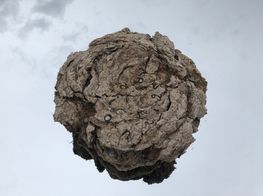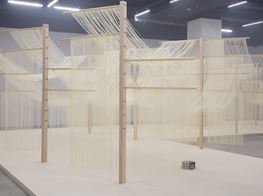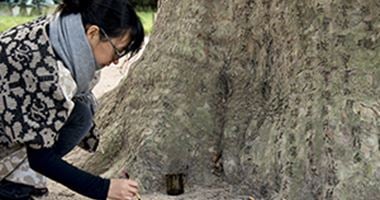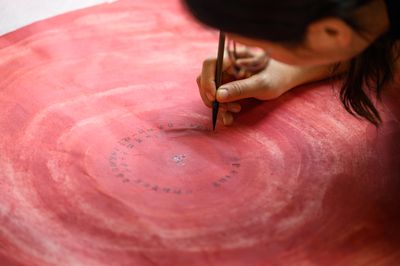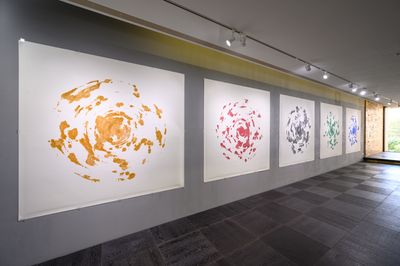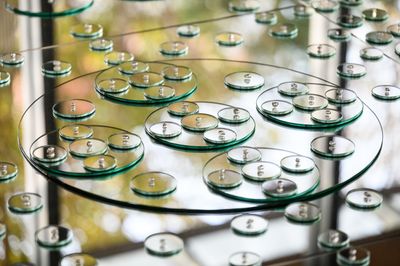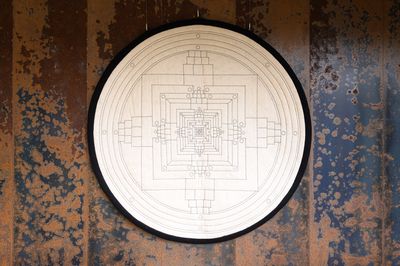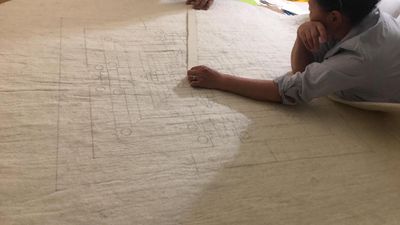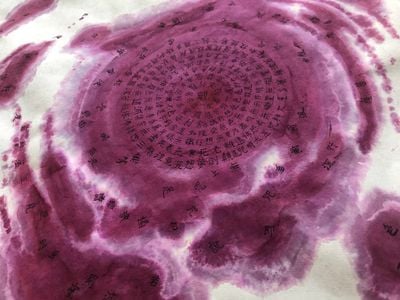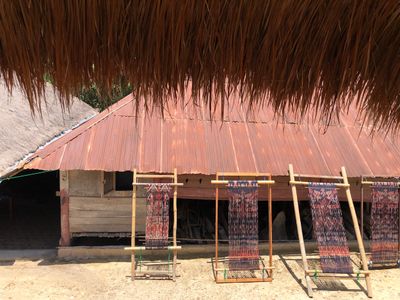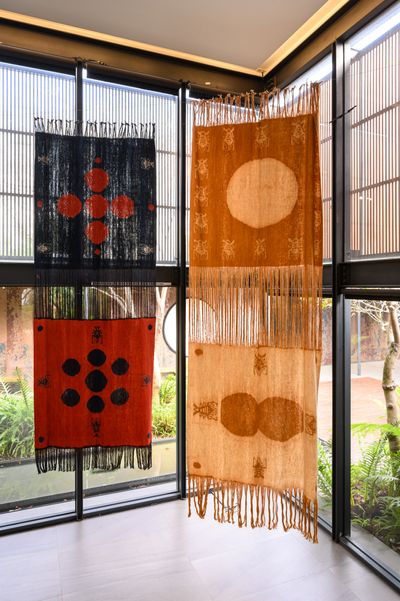Charwei Tsai: Collaboration as Method
Many successful collaborations happen unpredictably. They can start out as a friendship or a connection of mutual interest, before trust is built and a project forms.

Charwei Tsai, Ndewa and Hamanang (2021). Exhibition view: The Womb & The Diamond, Vital Space, Live Forever Foundation, Taichung City (31 January–30 May 2021). Courtesy Live Forever Foundation.
Such was the case with Charwei Tsai and Nency Dwi Ratna, who are exhibiting their collaborative work Ndewa and Hamanang (2021) as part of The Womb & The Diamond (31 January–30 May 2021)—a series of newly commissioned projects by Tsai showing at Live Forever Foundation's Vital Space and the National Taichung Theatre in Taichung City, Taiwan.
Ratna is from Sumba, an island in East Indonesia where Tsai and I travelled in early February 2020. Aware of the artist's interest in indigenous spiritual traditions, I imagined the island's animist beliefs might expand Tsai's ongoing investigation into the mandala, a geometric cosmic diagram prevalent in Buddhism.
Tsai's research into the spread of Tantric Buddhism from 5th-century India to Mongolia in the north, Java in the south, and east to Japan feeds into her mandala works showing at Vital Space.
'Five Sky Dancers' (2021), for example, is a drawing series on rice paper that honours the five wisdom dakinis, or 'sky dancers' in Sanskrit—each an expression of feminine energy in the Tantric tradition—using different pigments extracted from minerals such as cinnabar and orpiment, upon which mantras in Tibetan script are written.
The main installation in Taichung, The Womb & The Diamond, is composed of just over a thousand pieces of mirror and glass, with each fragment referencing one-syllable mantras from Koyasan in Japan.
When Tsai created the work, Bhutanese Buddhist teacher and filmmaker Khyentse Norbu, who presented photographs at the 58th Venice Biennale, was in Taiwan. Tsai asked for his blessing, which became an important part of the installation. The encounter is reflected in two objects placed either side of the mandala: a womb-like glass piece blown by Norbu after the recitation of the Dependant Arising Mantra, representing all-encompassing space, and a diamond, representing indestructibility.
Another collaborative piece, Kalachakra (2021), comprises a series of mats created by Tsai as a result of her travels to Mongolia in 2018 and 2019 with artists Davaajargal Tsaschikher and Ganzug Sedbazar. Tsai worked with Tsaschikher's mother to sew the Kalachakra mandala onto traditional Mongolian mats, symbolising the interdependent connection between atoms and the universe. Through this process, Tsai offered a means of reconnecting with the land and ancestral spirits through natural and locally sourced materials.
In Sumba, our main contact was Ratna, whom I worked with on a 2019 project to create a workshop for tenun ikat, a dying technique for creating patterned textiles, in her backyard. Across East Nusa Tenggara, tenun ikat is an important aspect of village life, used in different rituals like weddings and funerals.
Patterns connect ancestors and descendants through narrative and symbolism. Different motifs are common in different areas—whether Sumba, Kupang, Ende, Maumere, or Larantuka—and represent diverse histories, including the European-inflected symbols introduced after the arrival of traders during colonisation. In Sumba, animal motifs reflect the local Marapu tradition, whose beliefs have been the foundation of life for local people.
Encounters between contemporary artists such as Tsai with younger generations of weavers like Ratna open new possibilities for the future of art, particularly in places like Asia.
Marapu's basic principles balance macro and micro views of the cosmos, and an interconnection between human beings and nature—ideas that prompted Tsai to include this new encounter in her mandala research, and bridge different senses of spirituality.
Inscribed into the process of making tenun ikat are Marapu beliefs around nature and the environment, and the idea that the act of creating should be connected to the life circle. To reflect this connection between process and nature, Tsai created yarn from the fruits of randu trees, which she spun manually using traditional tools.
The yarn was then coloured using natural dyes, from leaves, roots, dried fruits, or seeds, that hold the richness of local ancestral knowledge, as understood by the passing of techniques from generation to generation—an expression of regeneration rooted in knowledge transfer.
Four big tenun ikat resulted from this collaboration, which are hung high from the ceiling at Vital Space, like a bridge between earth and sky. Each weave combines mandala forms with the image of the lobster—a Marapu symbol of regeneration, since it can regrow its limbs—using three basic colours: blue, red, and yellow, drawn from indigo, turmeric, and morinda leaves and roots.
Ndewa and Hamanang, the installation's title, means the balancing of two elements, the great mother and father spirit forces, which beautifully summarises the complex narrative embodied in these ikats, and how weaving brings different worlds together. Key to the whole process is reciprocity, with designs by Tsai elaborated into new forms through the process of collaboration with Ratna and Sumba's weavers.
Encounters between contemporary artists such as Tsai with younger generations of weavers like Ratna open new possibilities for the future of art, particularly in places like Asia.
Tsai demonstrates a more sustainable relationship with local artisans, where collaborators are able to expand their horizons, not only in the name of keeping tradition or innovation, but also to rethink the way complex wisdoms and historical customs can remain relevant to a younger generation. Tradition, like identity, always evolves and has no single face. There is much to explore.—[O]

